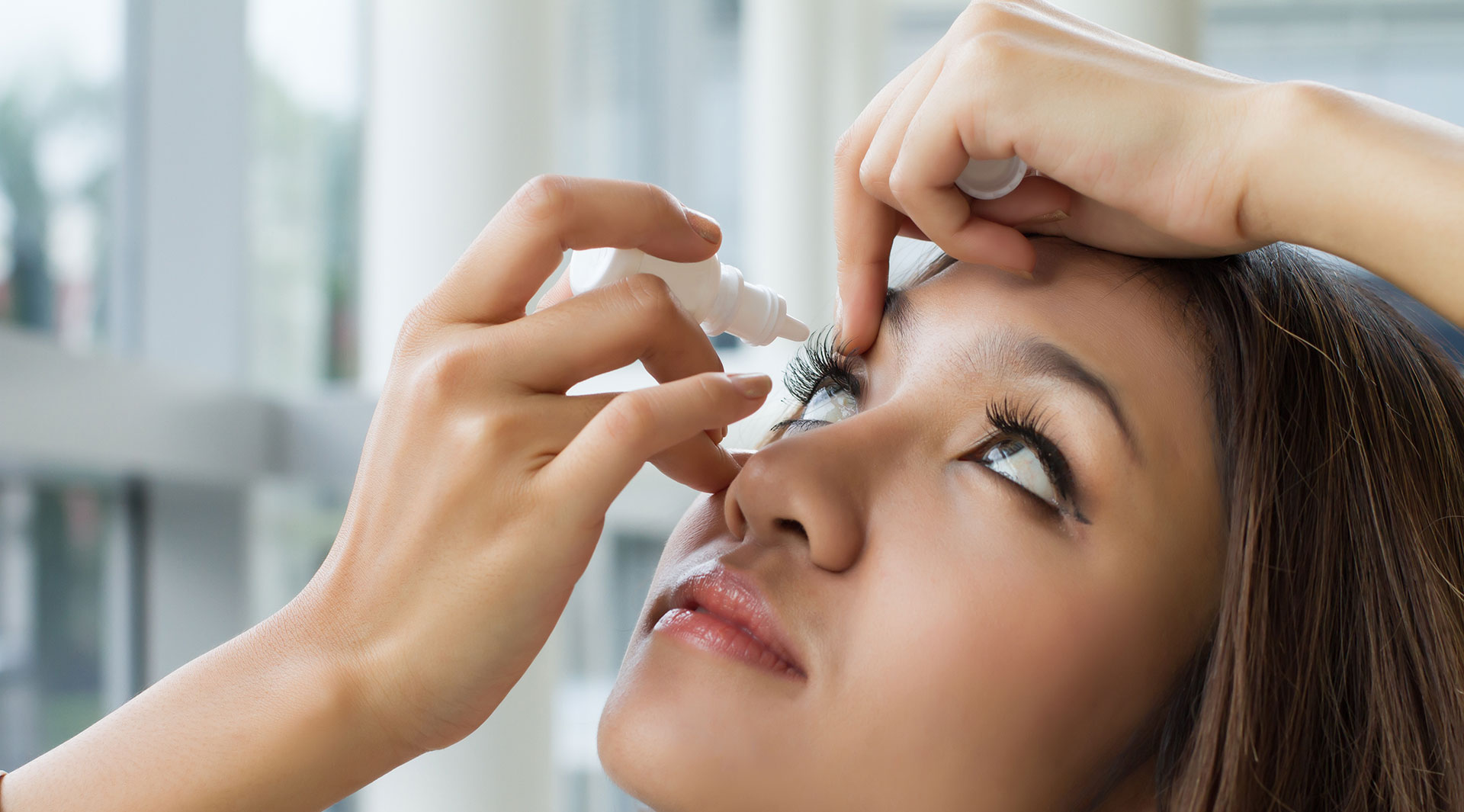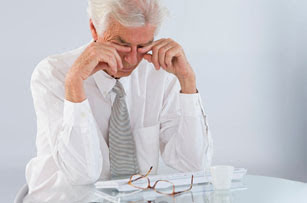
While most of us associate tears with crying, cutting an onion, or getting something in our eye, the fact of the matter is healthy eyes require that a thin layer of tears be present at all times. This thin film of tears serves to lubricate, nourish, and protect the front of our eyes. If not enough tears are produced, if the quality of tears is poor, or if the tears evaporate too quickly, a condition known as dry eye can develop.
Dry eye is actually a very common disorder that can be caused by a number of different factors. Although it can affect anyone at any age, dry eye occurs most often in older individuals. The primary reason is that as we age the amount of tears we produce declines. Nearly five million Americans 50 years of age and older suffer from dry eye. Gender also plays a role with more women than men afflicted with the condition.

Besides advancing age and gender there are a number of other factors that can increase your risk of developing dry eye. Certain medications, including antihistamines, decongestants, antidepressants, oral contraceptives as well as some treatments for blood pressure, anxiety, acne, or other eye conditions can affect tear production. Systemic diseases (illnesses that affect the entire body) like rheumatoid arthritis, lupus, or diabetes can also predispose you to dry eye, as well as problems with inflammation of the eyelids (blepharitis) or inflammation of the surface of the eye. Additionally, dry eye can develop from not being able to close your eyes as a result of a medical condition like a stroke or a Bell's palsy (a form of facial paralysis), and even as a consequence of the long-term use of contact lenses, or following a surgical eye procedure.
In some cases dry eye may be due to of environmental causes. Each time you blink your eyes, tears are spread across the front surface of your eyes. When you spend a long time looking at things like a computer screen, the television, or through a microscope your blink rate and the amount of tears washing over your eyes decreases. The condition can also be caused by exposure to dry rooms or climates, winds, as well as smoky environments.
Suffering from dry eye can be more than just mildly annoying. It is often a chronic condition that can result in significant discomfort and cause visual disturbances that interfere with your daily activities.
Symptoms of dry eye can vary from person to person and may include:
Although complications are uncommon, advanced dry eye can potentially damage the front surface of the eye and impair vision.
If you are experiencing persistent symptoms of dry eye, it is important to make an appointment for a comprehensive eye exam. Your ophthalmologist will carefully review your symptoms, your overall health history, and any medications that you are taking. Any environmental factors that may be contributing to your discomfort will also be assessed. As part of the physical exam, the ophthalmologist will examine your eyelids, evaluate your blink dynamics and inspect the cornea. Diagnostic tests to measure the quantity and quality of your tears will also beperformed.

The treatment that the ophthalmologist prescribes is determined by the severity of the symptoms and any underlying conditions. The overall objective of the treatment plan is to restore a sufficient amount of tears to relieve your eye discomfort, minimize the dryness, and protect the health of your eyes. Artificial tears and soothing ointments work well in many situations, but other approaches may be advised for more advanced or unresponsive cases of dry eye. Additional treatment options may include anti-inflammatory eye drops or tablets, medications to boost tear production, or procedures to conserve tears and prevent them from draining away. Sometimes special lenses or goggles are recommended to keep the moisture in your eyes.
There are also several things that you can do at home to minimize the impact of any environmental factors contributing to your dry eye. Maintaining a healthy diet and lifestyle is important. Remember to take breaks to rest your eyes when looking at a screen or reading for prolonged periods of time. Other simple things that you can do for dry eye include wearing sunglasses to reduce your exposure to drying winds and the sun, adding moisture to dry rooms with a humidifier, and avoiding cigarette smoke.
Remember your eyes are a precious gift. Don't ignore the signs and symptoms of dry eye. Partnering with your ophthalmologist is the best way to relieve your symptoms and to maintain healthy vision for a lifetime.
